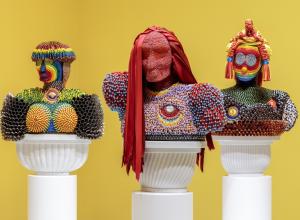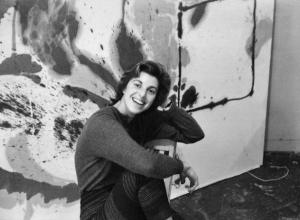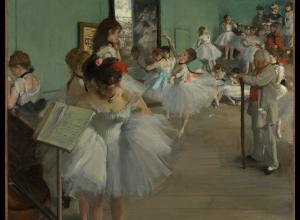"Ryan Mosley once worked for the National Gallery in London — where he was disciplined for sketching the art.
‘A finished painting will probably be very different to how I’d imagined it,’ admits Ryan Mosley, speaking from his London studio where, in a single week, he estimates he can be working on between 15 and 20 canvases at once.
Mosley compares the process to ‘spinning plates’. ‘Something might happen in one painting that will generate the next layer of paint that goes onto another,’ he explains. ‘There’s an embryonic phase that allows for cross-fertilisation.’
That restless need to make and rework an image has characterised Mosley’s practice from the beginning of his career. As a young artist, he supported himself through work as a warden at London’s National Gallery, but was repeatedly disciplined for sketching the paintings.
Today, drawing continues to underpin his work. ‘The characters in my paintings come from a combination of sketches in sketchbooks and also postcards, newspaper clippings and things that you hoard,’ Mosley explains. Certain figures, such as a bearded man, re-emerge in other paintings.
In recent paintings, Mosley’s final ‘cast of characters’ sit on a horizon. ‘In the early paintings, the horizon became a structure at the bottom of the canvas; that was where protagonists would play out their narratives. In more recent paintings its become a stage, supporting characters as they play their story.’
What that story is, says the artist, remains uncertain until the moment of a work’s completion. ‘Even up until [that point] it feels like you’re chasing something — you’re not sure what. It’s that distinct need to chase something that’s eluding you that’s constant in painting.’
On 10 March, a trio of Mosley’s characters will be a highlight of Handpicked: 100 Works Selected by the Saatchi Gallery. ‘Sirens comes from Greek myth, and I was interested in 19th-century paintings of Greek narratives that were done in a very British way,’ the artist explains. ‘The characters look quite mechanical, like automatons, but perhaps are also able to hold an interesting conversation… It’s both frightening and enchanting.’"
Credit: Christie's


















![DEl Kathryn Barton [Australian b. 1972] the more than human love , 2025 Acrylic on French linen 78 3/4 x 137 3/4 inches 200 x 350 cm Framed dimensions: 79 7/8 x 139 inches 203 x 353 cm](/sites/default/files/styles/image_5_column/public/ab15211bartonthe-more-human-lovelg.jpg?itok=wW_Qrve3)




